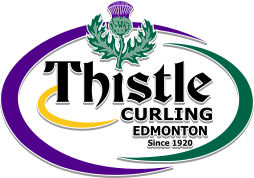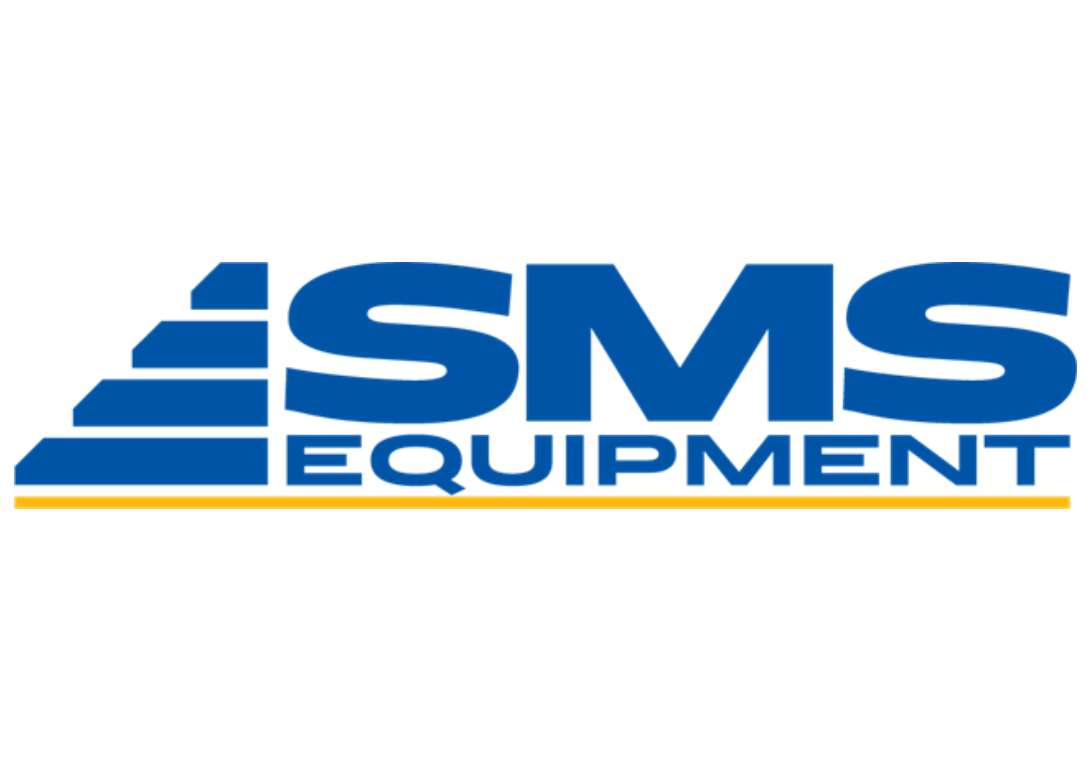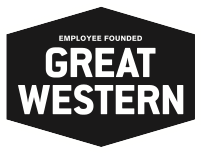Curling originated in the Highlands District in the year 1912, within a stone’s throw of this building, where the Highlands Curling Club operated on two sheets of ice. Fire destroyed the building in 1917. Three years later, suitable premises were located in the Exhibition Grounds1 where the Thistle Curling Club was formed in 1920.
During the depression years, the Club operated with a very limited membership. During the second World War, our building was taken over by the Royal Canadian Air Force. We continued to operate as a club of ten teams, on ice made available to us at the Edmonton Curling Club. With the loss of the Edmonton Club for war purposes, we moved to the Alberta Avenue Curling Club with only six teams and continued to curl there until our building was again available to us in 1945. Through the united efforts of these twenty-four members, we started our first season with a full complement of thirty-six teams. That membership grew until last season2, where we had a total of sixty teams.
In the fall of 1951, a committee was formed to promote a new curling rink and in June 1952, we were given a certificate by the Alberta Government to operate as a limited company and to arrange our own financing. Land was procured, plans drawn up, and early in August3, our Mayor4turned the first sod. Construction started and good progress was made until October, when winds of hurricane force blew down a considerable portion of the concrete block walls, overhead trusses and posts. Early in November, the local plumbers’ strike disrupted the installation of plumbing facilities. Finally, after these delays and prolonged mild weather, this new building was ready for occupancy and curling ice was available for our first draw on December 22nd5 with a full complement of eighty teams.
After thirty odd years, the Thistle Curling Club has come back to almost the same location from which curling originated in this district6. Back to an edifice proclaimed by some to be the best in Canada, but definitely the best in the West.
Notes:
- The Highlands District of Edmonton; the Exhibition Grounds refers to the site of Edmonton’s Exhibition Grounds, and Northlands Spectrum (horse racing and gaming)
- 1952 Season
- August, 1952
- Mayor William Hawrelak
- December 22, 1952
- The Eastglen area of Edmonton
(The following document was written in 2009 as a brief history of the Thistle Curling Club at that time.)
Thistle Curling Club (1920 – 2009)
The Thistle is the oldest curling club in Edmonton. It was founded in 1920 at a downtown location near Jasper Avenue and 103 Street. Meeting minutes tell us that in March of 1920 a meeting was held at Sturrock’s Store for the purpose of discussing the organization of a curling club. Once organized this club was affiliated with the Alberta Curling Association, which would have been the predecessor of the Northern Alberta Curling Association. The club had four sheets of ice and the fees were $25 for full membership or $15 for curling privileges only. Those who purchased the full membership were entitled to an interest in any property that was acquired by the club. Records show that 20 members purchased the full membership while 19 people purchased the curling privileges only type. During that first season in 1920/1921 Alderman A. R. McLennan served as president of the Thistle Men’s Curling and Mrs. W.M. Seller was president of the Thistle Ladies Curling.
During the 1930’s the Thistle Curling Club moved; the address is shown as Exhibition Grounds with a phone number of 73255. However, during the war the armed forces needed that building so curling was relocated. Records show that the Thistle curlers rented ice at the Edmonton Club in 1941 and from 1942 to 1945 they curled at the Avenue Curling Club on 117 Avenue and 94 Street. At the conclusion of the war they moved back to the Exhibition Grounds.
In December of 1950 the current location of the Thistle (69 Street and 114 Avenue) was approved as a curling rink site and on January 10, 1953 the official opening was held with the first rock being thrown by Mayor Bill Hawrelak. The facility housed eight sheets of natural ice. In 1954 an artificial ice plant was installed. The cost was $55,000 raised through the sale of debentures to shareholders and curlers. In 1956 the upstairs portion of the rink was completed and furnished at a cost of $30,000. By 1958 the Thistle was home to 320 curlers or 80 teams who joined at a cost of $30 per shareholder, as well as a ladies club who played three afternoons a week.
Since those early days the Thistle Curling Club has enjoyed many busy and successful years. It strives to serve both recreational and competitive curlers of all ages, from little rockers and juniors to the seniors and masters. The Thistle has a successful little rock and junior program and is home of the annual Neil Moher Junior Bonspiel; it is home of the Senior Super League and hosts the annual Senior’s Cliff Fender bonspiel; it is home to the Firefighter’s league and has hosted several provincial and two national Firefighter’s competitions; as well being the home of several recreational leagues and hosting other spiels on an annual basis.
One of the most noteworthy accomplishments and a continuing source of pride in the club is the mirrors that have been installed at the away-end in the ice area. These mirrors are situated so spectators and curlers have a clear view of the house at the far end of the sheet. The installation of the mirrors was financed in part through member donations, but a significant portion of the funds came as grant money available only because the members matched the value with a like value in volunteer labour hours.
One family stands out in the recent history of the Thistle Curling Club, and that is the family of the club manager, Marvin Huff. His association with the Thistle began in 1975 when he was working for Herb Olsen Curling Enterprises and serviced the Thistle ice once a week on Sunday evenings. Then in December of that year he was asked to maintain the ice for the rest of the season. In 1976 Marvin formed his own company “Marv’s Ice Services” and contracted to the Thistle to provide all ice services, as well as lounge management and janitorial services. During this time he was assisted by his wife Evelyn, her daughters Gail and Sharon Larson and son Norman Larson; as well as Marvin’s son Robin Huff and his brother Doug Huff.
In 1991 Marvin took the position of General Manager at the Thistle and became responsible for the management of all club operations. With the help of his family, he undertook the task of redecorating and rejuvenating the aging facility. Time and equipment were donated as the club was painted and wall papered.
Also in 1991 Marvin’s wife Evelyn took over the management of the club concession, and Marvin’s son Roger took on the responsibility of ice maker. Roger remained as ice maker until 1997 and Evelyn stayed on as concession manager until her retirement in 2003. Marvin and Evelyn’s son, Daryl Huff began as assistant ice maker in 1993. He is the ice maker at the Thistle today with the assistance of his wife Rhonda Millar and their daughter Ginger Huff, who is the delight of all members. The curlers at the Thistle feel they have the best ice in the city of Edmonton.
Marvin has been instrumental in the Thistle’s being chosen as the host club for such prestigious events as the Strathcona Cup in 2003 and the World Seniors Curling Championships in 2007. The Strathcona Cup is a friendly curling competition between Canada and Scotland that started with a visit of a Scottish team to Canada in 1902/03. It is one of the oldest international curling competitions in the world. The World Senior Curling Championship was hosted in 2007 and saw eleven women’s teams and fourteen men’s teams from all over the world compete to become senior world champions.
The Thistle is also proud to be the home of the annual Icemakers Bonspiel which was revived by Marvin Huff and the folks from Olson Curling Supplies in 1997. This is a fun event held in the late spring to honour those who work in the curling world and those who volunteer their time to curling. It is well attended and much appreciated by those involved.
Information provided by Marvin and Evelyn Huff, Tom Byers, and Barry Westgard
Written by Joan Westgard, November 2009







